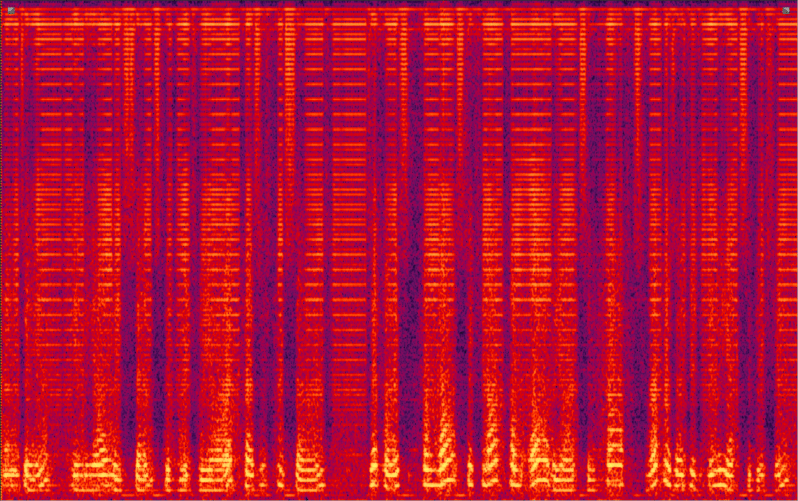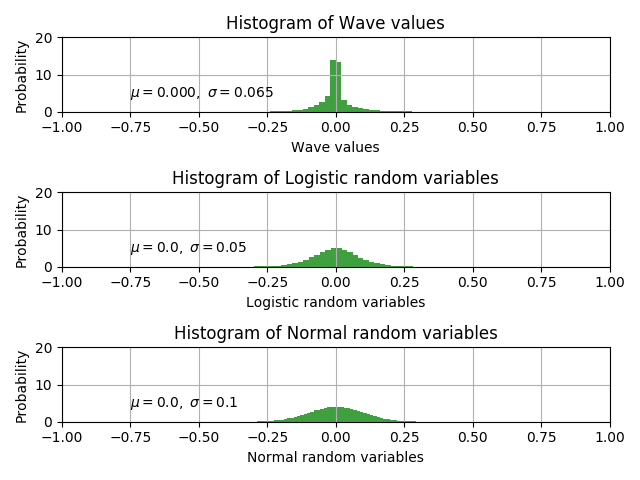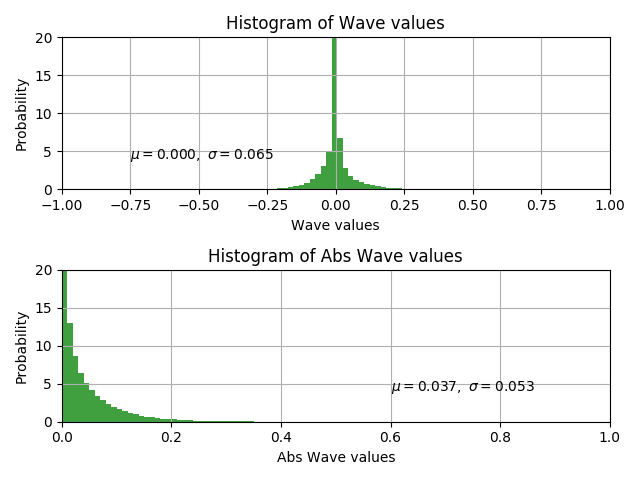bfs18 / Nsynth_wavenet
Programming Languages
Labels
Projects that are alternatives of or similar to Nsynth wavenet
Implement parallel wavenet based on nsynth.
To make the code and configuration as simple as possible, most of the extensible properties are not extended and are set to default values.
How to use the code:
Suppose a directory named WAVE_DIR contains all the wave files that are used to train a wavenet model.
-
Downsample the wave files if the sampling rate is not 16k Hz (only 16k Hz wave files are supported for the time being).
Librosa downsample result may be not in [-1, 1), so usetool/sox_downsample.pyto downsample all waves first. The arguments are quite self-evident. -
Build the tf_record data.
python3 build_dataset.py --wave_dir WAVE_DIR --save_path TFR_PATH -
Train a teacher wavenet.
config_jsons/wavenet_mol.jsonis a proper configuration file for a teacher wavenet.python3 train_wavenet.py --config config_jsons/wavenet_mol.json --train_path TFR_PATH \ --log_root WN_LOG_ROOT --total_batch_size 28 --gpu_id 0,1,2,3The training script supports multiple GPUs. Just specify the gpu ids with
--gpu_idto use multiple GPUs.
Either--logdiror--log_rootcan be used to specify the directory that saves the training log and model files. If--log_rootis assigned, it will make a subdirectory named by the abbreviation of the running configuration inLOG_ROOT.--logdiris used to specify an existing log directory so an interrupted running can be continued from the saved models. -
Generate waves form a trained wavenet. Suppose a trained wavenet is saved in WN_LOGDIR.
python3 eavl_wavenet.py --ckpt_dir WN_LOGDIR --source_path tests/test_data \ --save_path tests/pred_data --gpu_id 0 -
Train a parallel wavenet.
python3 --config config_jsons/parallel_wavenet.json --train_paht TFR_PATH \ --teacher_dir WN_LOGDIR --log_root PWN_LOG_ROOT --total_batch_size 28 \ --gpu_id 0,1,2,3 -
Generate waves form a trained parallel wavenet. Suppose a trained parallel wavenet is saved in PWN_LOGDIR.
python3 eavl_parallel_wavenet.py --ckpt_dir PWN_LOGDIR --source_path tests/test_data \ --save_path tests/pred_data --gpu_id 0 -
If multiple experiments is run on multiple servers, you may want to gather all the experiment logs and generated waves from each host. You can use
run_all_eval.pyscript. A configuration file is needed to specify the hosts, users, passwords, exp_dirs and eval_scripts. For example:all_eval.json { "hosts": ["", "127.0.0.233"] "users": ["", "asdf"] "passwords": ["", "xxxx"] "exp_dirs": ["~/exp/logdir1", "/data/logdir2"] "eval_scripts": ["eval_parallel_wavenet.py", "eval_wavenet.py"] }If it is a local host, you can set hosts, users, passwords to empty strings.
python3 run_all_eval.py -c all_eval.json -w tests/test_data -t ~/all_test_log
Pre-trained models:
wavenet model: ns_wn-eval.tar.gz
Set DOUBLE_GATE_WIDTH=True in wavenet/wavenet.py when using ns_wn-eval.
Clarinet teacher model: ns_wn-gauss-eval.tar.gz
parallel wavenet model: ns_pwn-eval.tar.gz
parallel wavenet model with contrastive loss: ns_pwn-eval-2.tar.gz
Clarinet vocoder model: ns_pwn-gauss-eval.tar.gz
The pre-trained models are trained on LJSpeech dataset.
The package contains the checkpoint and the confing json file.
Code status:
- [OK] wavenet
- [OK] fastgen for wavenet
- [OK] parallel wavenet
- [OK] gen for parallel wavenet
It seems that using mu law make the training easier. So experiment it first.
The following examples are more of functional test than gaining good waves. The network may be not trained enough.
- tune wavenet
- [OK] use_mu_law + ce LJ001-0001 | LJ001-0002
- [OK] use_mu_law + mol LJ001-0001 | J001-0002
- [OK] no_mu_law + mol LJ001-0001 | LJ001-0002
- [OK] no_mu_law + gauss (Clarinet teacher) LJ001-0001 | LJ001-0002
- tune parallel wavenet
- use_mu_law
- [OK] no_mu_law Failed case 1 | Failed case 2 | A better case | with contrastive loss | Clarinet Vocoder | Share deconv stack
The power loss defination is important, the failed case 1 use pow(abs(stft(y))) as mean square error input,
the failed case 2 use log(abs(stft(y))). The are both noisy, but the noises are of different type.
A better case uses abs(stft(y)), it is much clearer than the previous 2 cases. Probably this is the right choice.
I plot the refinement process of a spectrum generated by abs(stft(y)) configuration during training.

Proper initial mean_tot and scale_tot values have positive impact on model convergence and numerical stability.
According to the LJSpeech data distribution, proper initial values for mean_tot and scale_tot should be 0.0 and 0.05.
I modified the initializer to achieve it.

The figure is pot by this script
Decreasing loss does not indicate that everything goes well.
I found a straightforward method to determine whether a parallel wavenet is running OK.
Compare the values of new_x, new_x_std, new_x_abs, new_x_abs_std listed in tensorboard to statistics of real data.
If there is no difference of many orders of magnitudes, the training process is moving in the right direction.
e.g. The first tensorboard figure comes from a parallel wavenet trained without power lowss.
The values of new_x, new_x_abs are too large compared to real data. So I cannot get meaningful waves from this model.
The second is a model using power loss. Its values are much closer to real data.
And it is generating very noisy but to some extent meaningful waves.



